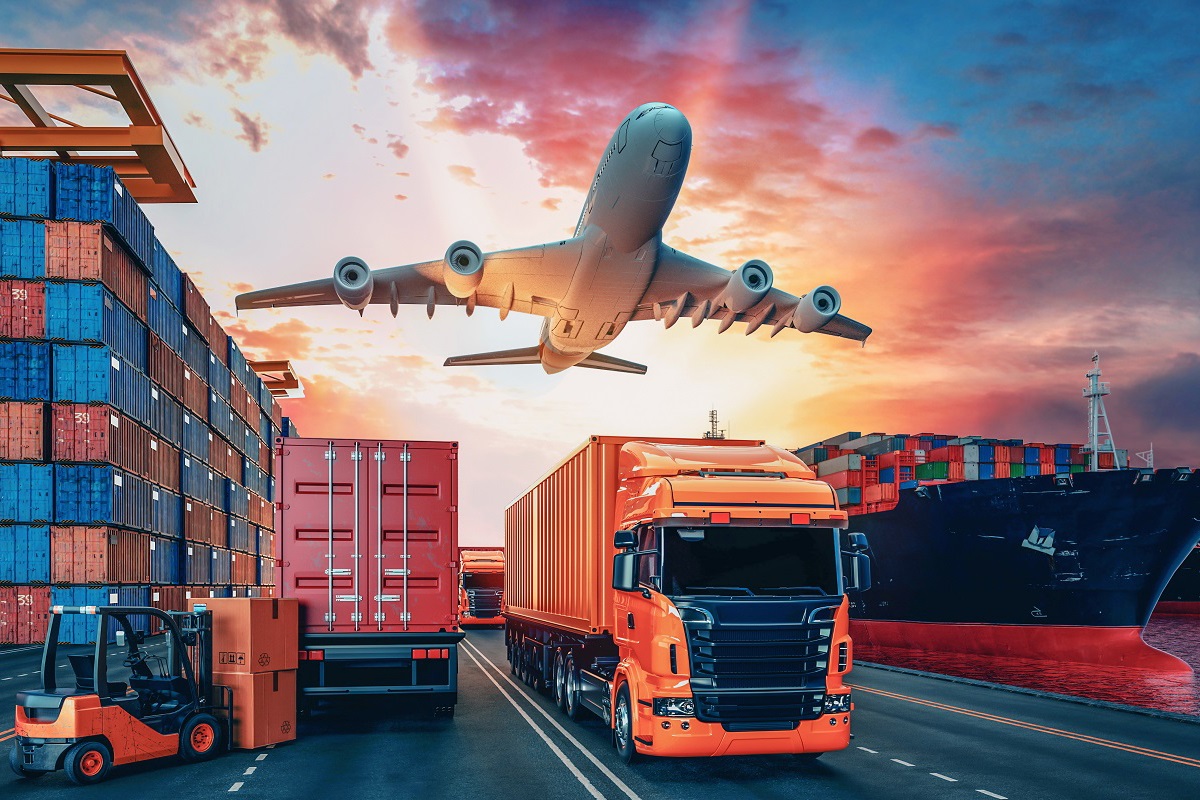Our Contribution to Capital Growth
We provide comprehensive solutions for transportation, warehousing, and digital logistics, helping businesses to grow and develop. Our team of experts specializes in optimizing all stages of logistics processes – from route planning and transport flow management to automating warehouse operations and implementing advanced IT solutions.
Modernization
Our company reviews and implements new solutions into existing logistics chains.
Creation
We offer a complete range of solutions for developing new logistics companies “turnkey”.
Digitalization
Developing IT solutions for the logistics industry. We implement supply chain management systems and analytical platforms.
Logistics Information
Transport is an investment in acquiring and upgrading a fleet of vehicles, rail cars, ships, and aircraft. It increases speed, reliability, and flexibility of deliveries while reducing transportation costs.
Warehousing infrastructure involves constructing and upgrading warehouses, terminals, and distribution centers. Optimizing warehouse networks speeds up cargo handling and reduces storage costs.
Automation includes investments in digital technologies, robotics, WMS systems, and AI. They boost the efficiency of logistics processes, reduce errors, and speed up order fulfillment.
Warehouse
Automation
Transport
Is logistics safe?
Modern logistics relies on a set of measures to ensure safety at every stage of transportation.
GPS tracking: Real-time vehicle monitoring helps control routes, detect deviations, and respond quickly to emergencies.
Video surveillance systems: Internal and external cameras in trucks keep an eye on loading and unloading operations.
Cargo insurance: Leading companies insure cargo, covering damage, theft, and force majeure.
Driver monitoring systems: Driver fatigue detection (DMS) prevents accidents. For instance, the Wialon system records harsh braking, lane changes, and violations of work-rest regulations.
Example: DHL, a major logistics operator, uses Resilience360 to monitor risks on routes worldwide.
Which technologies are used in modern logistics?
Logistics today is a high-tech field. Key solutions include:
TMS (Transport Management System): Automates route planning, cost accounting, and cargo tracking.
IoT sensors: Temperature, humidity, and vibration sensors ensure proper shipping conditions, especially in pharmaceutical and food sectors.
Big Data and analytics: Analyzing large data sets to predict delays, optimize routes, and identify bottlenecks.
Warehouse Management Systems (WMS): Robotized warehouses speed up order fulfillment and reduce human error.
Blockchain: A transparent and secure supply chain, where every participant can see each step of the shipment.
Example: Amazon actively implements warehouse robotics and uses drones for delivery.
What is a supply chain, and why is it important?
A supply chain is the set of processes from producing goods to delivering them to the end consumer.
It includes:
Raw material procurement → Production → Storage → Transportation → Distribution → Retail.
Any disruption in the chain leads to delays, losses, and additional costs.
Example: In 2021, the global supply chain crisis caused by COVID-19 led to a tenfold increase in container shipping costs and significant delivery delays worldwide. Companies using automation and supplier diversification (e.g., Zara) adapted faster.
What are the risks in logistics, and how are they handled?
Key risks:
Delays: Weather conditions, traffic jams, vehicle breakdowns.
→ Solution: Alternative routes, AI-based forecasting.
Theft: Especially valuable goods.
→ Solution: Alarm systems, satellite security, tamper-evident seals.
Cargo damage: Violation of storage conditions.
→ Solution: Cold chain solutions, IoT temperature monitoring.
Human factor: Loading errors, driver fatigue.
→ Solution: Automation, enforcing work-rest schedules, training.
Example: Nestlé uses digital platforms for real-time supply monitoring and product quality control.
How do logistics companies make money, and how are earnings distributed?
Revenue sources:
Freight rates.
Warehousing and storage services.
Additional services (insurance, forwarding).
Route optimization and cost reduction.
Profitability depends on transport utilization, process optimization, and technology implementation.
Example: The Russian company Delovye Linii implemented its own TMS, reducing empty runs and boosting profitability.
What are the environmental trends in logistics?
Electric trucks: Tesla Semi, Volvo Electric Trucks.
Route optimization: Lower mileage = fewer emissions.
Eco-friendly forklifts: Electric forklifts in warehouses.
Cargo drones: Potential for quick delivery with a low carbon footprint.
Example: Maersk invests in methanol-powered ships, cutting CO2 emissions by 70%.
How fast is the logistics market growing?
The global logistics market is valued at $9.6 trillion (2023) and is projected to grow at 6-8% annually. Key areas include:
E-commerce (e.g., Amazon, Alibaba).
Cold chain (transportation of food, vaccines).
Last-mile delivery.
Example: In Russia, CDEK expanded from 1,000 to 4,500 pickup points over 5 years.
Why is investing in logistics so promising?
Constant growth in freight turnover.
Digitalization reduces costs and increases transparency.
High margins in warehousing logistics.
Stable demand – goods always need to be moved.
Example: The 2016 IPO of Chinese logistics company ZTO Express raised $1.4 billion, becoming the largest transportation IPO on the NYSE.
Investing in Logistics
Logistics is the backbone of the global economy. Developing warehouse systems, implementing digital technologies, and improving transport infrastructure enable companies to optimize costs and increase efficiency.
With the growing demand for eco-friendly solutions, investments in electric transport and reducing carbon footprints are becoming a priority. Supporting these areas helps preserve nature and improve quality of life.
By choosing logistics as an investment sector, you are investing in the future of the global economy.
